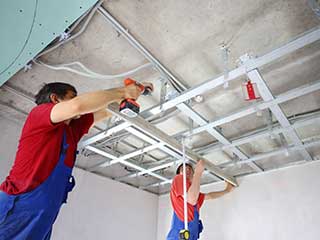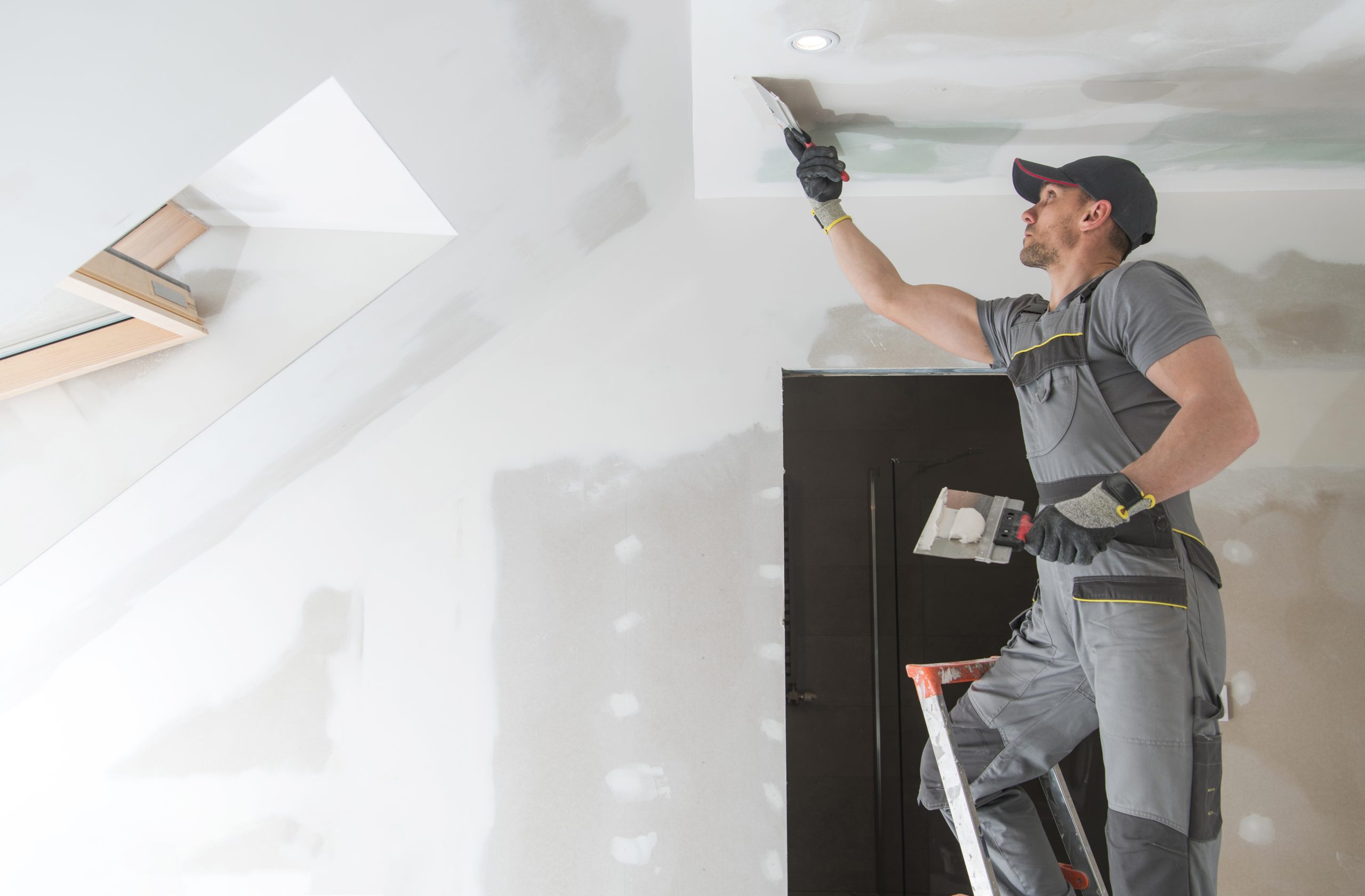Combine the skill of drywall contractors and classic Interior Painting for a luxurious home look.
A Comprehensive Overview to Mastering Drywall Fixing and Installment
This overview uses a thorough expedition of drywall repair work and installation, accommodating both beginners and skilled professionals. It lays out important devices, strategies for patching and hanging sheets, and the essential finishing processes. drywall contractors. By recognizing usual pitfalls, individuals can attain sleek results. Understanding these abilities not just enhances one's home however additionally builds confidence in DIY endeavors. What foundational pointers will ensure an effective task from begin to finish?
Crucial Devices for Drywall Repair Service and Setup
When beginning on drywall repair and installment, a couple of vital tools can substantially improve the effectiveness and high quality of the job. A drywall knife, commonly readily available in numerous sizes, is essential for applying joint compound and smoothing joints. A taping knife is likewise needed for feathering edges and ensuring a smooth finish. Furthermore, a drywall saw or utility knife allows for accurate cutting of drywall sheets to fit any type of space.

Step-by-Step Guide to Patching Holes
Covering openings in drywall is a simple process that can recover the wall's look and stability. To start, the location around the opening ought to be cleaned up and any loosened debris eliminated. For small openings, a basic spackle or joint compound can be applied with a putty blade. Bigger holes may need a spot; an item of drywall can be reduced to fit the hole, safeguarded with sticky or screws, and after that taped around the edges. Once the spot is in location, joint substance is applied over the spot and feathery bent on blend with the bordering wall. After the compound dries out, sanding is needed to attain a smooth finish. The repaired area can be topped and repainted to match the remainder of the wall surface. This technique assures a seamless repair, enhancing the general appearance of the drywall and keeping its architectural stability.
Techniques for Hanging Drywall Sheets
After successfully repairing openings in drywall, the next step involves hanging new drywall sheets to create a seamless surface. To accomplish this, one have to begin by gauging the wall area accurately and reducing the drywall sheets to fit. It is vital to hang the sheets horizontally for much better structural stability, starting from the top and functioning downwards.
Utilizing a drywall lift can simplify the process, specifically for ceiling installations. As soon as placed, protecting the sheets with drywall screws at periods of about 12 inches along the weblink edges and 16 inches in the area is important. This guarantees a solid hold and decreases the threat of drooping. For edges, the sheets need to be reduced to fit snugly, permitting cleaner joints. Lastly, it is a good idea to startle the joints between sheets to enhance the total framework, producing a much more resilient coating all set for the following phase in the drywall installation procedure.
Ending Up Touches: Taping and Mudding
Completing the drywall installation includes the crucial actions of taping and mudding, which assure a smooth and refined finish. Insulation calls for the application of joint tape over the joints between drywall sheets. Interior Painting. This tape can be either paper or fiberglass harmonize, with each kind offering one-of-a-kind advantages. After taping, the next action is mudding, where joint substance, or "mud," is put on cover the tape and load any blemishes
Making use of a drywall blade, the compound must be spread evenly, guaranteeing a feathered edge to minimize noticeable adjustments. Multiple coats are commonly essential, with fining sand in between each layer to attain a smooth surface. Careful attention throughout this process is important, as it considerably impacts the last look of the wall surface. With the ideal technique and patience, the end outcome will be a remarkable structure all set for painting or finishing touches.
Typical Errors to Stay Clear Of in Drywall Projects

One more common blunder is not allowing enough drying out time in between layers, which can trap wetness and compromise the finish. Furthermore, overlooking to feather the sides appropriately can produce noticeable lines and imperfections. Ultimately, avoiding sanding or making use of incorrect techniques might leave harsh places. By understanding these risks, individuals can significantly boost the quality of their go right here drywall tasks and accomplish a professional-looking surface.
Often Asked Concerns
Can I Repair Drywall Without Specialist Help?
Yes, one can repair drywall without specialist aid. With the right tools, materials, and advice, people can successfully deal with small repairs. Considerable damages might require expert knowledge for perfect outcomes and resilience.
For How Long Does Drywall Compound Require To Dry?
Drywall substance usually takes between 24 to two days to dry totally, relying on elements such as moisture and temperature level. Thinner layers may dry quicker, while thicker applications need even more time for excellent results.
What's the Ideal Kind Of Paint for Drywall?
The best kind of paint for drywall is normally a water-based latex paint. It gives exceptional insurance coverage, resilience, and ease of application, making it excellent for interior wall surfaces while enabling easy cleanup with soap and water.

Exactly how Do I Protect Against Mold on Drywall?
To protect against mold and mildew on drywall, warranty proper air flow, control moisture levels, use mold-resistant products, and without delay attend to any kind of leakages. Regular evaluations and instant removal of water damage are additionally crucial for long-lasting avoidance.
Is Drywall Recyclable After Removal?
Drywall is recyclable after elimination, gave it is without impurities like mold, paint, or other unsafe products. Reusing centers can process it into brand-new products, promoting sustainability and minimizing landfill waste in construction.
When starting on drywall repair service and installment, a couple of vital devices can significantly enhance the efficiency and quality of the job. After efficiently repairing openings in drywall, the following step includes hanging brand-new drywall sheets to produce a smooth surface. Finishing the drywall installment involves the important actions of mudding and taping, which ensure a sleek and smooth finish. Achieving a refined surface next in drywall jobs can be difficult, and numerous usual mistakes can weaken the top quality of the work. Yes, one can fix drywall without expert aid.